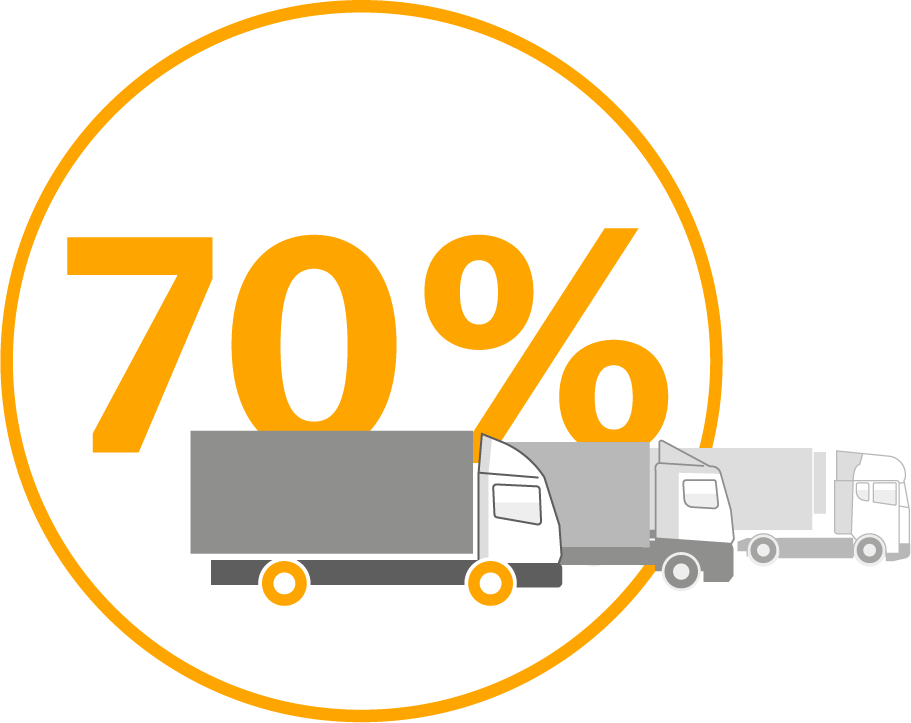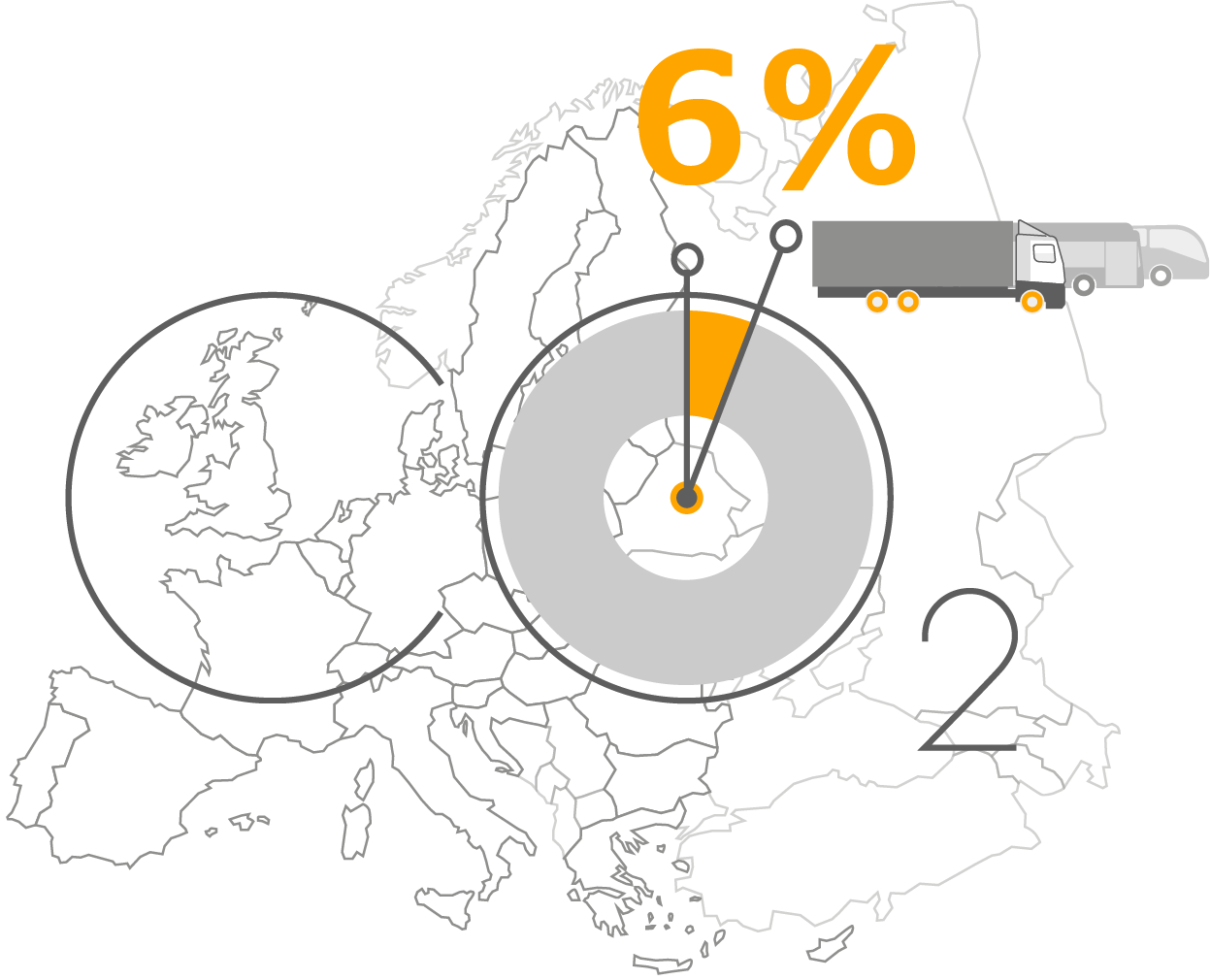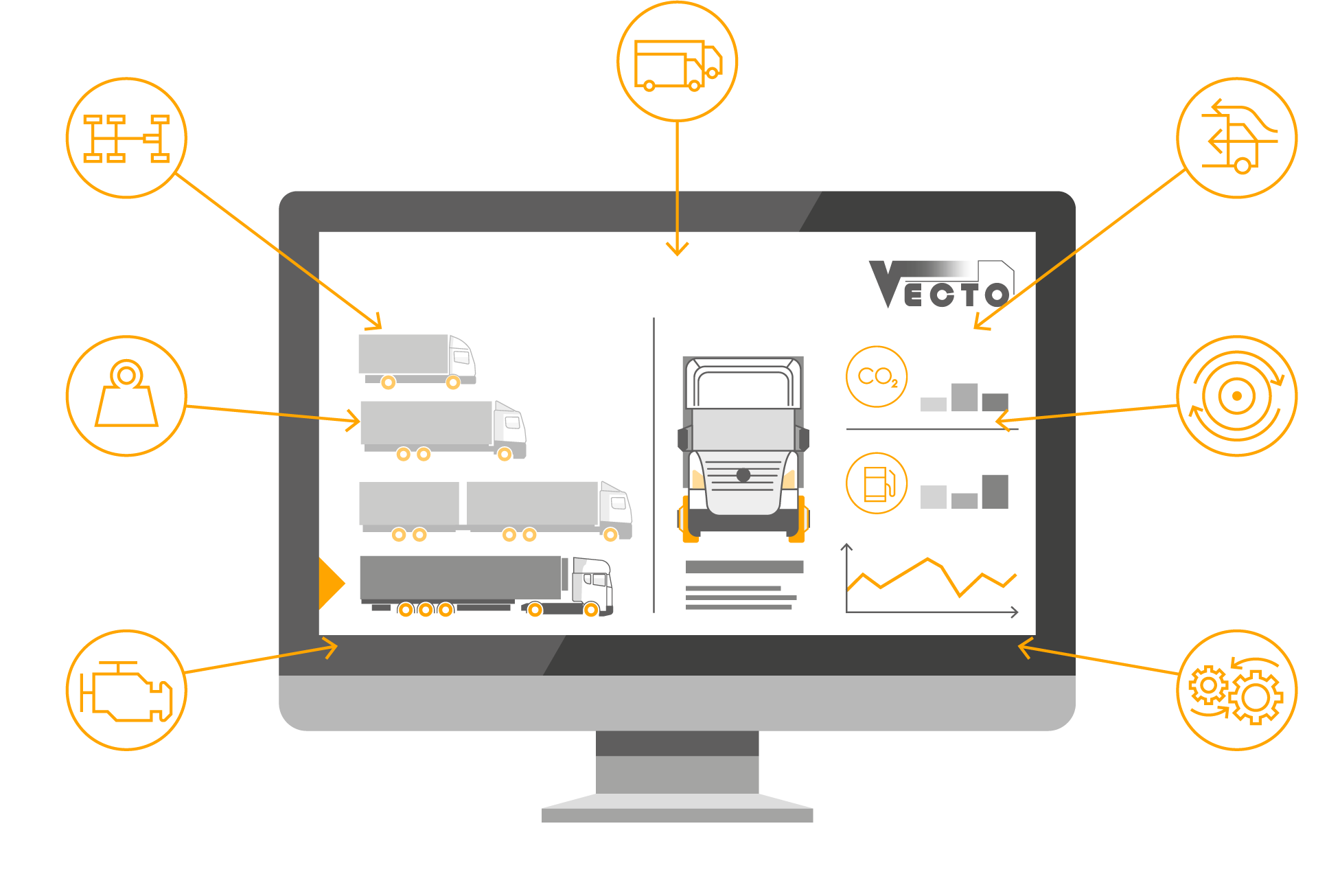# CO₂ Emissions & VECTO
Change is coming. We're ready, are you?
All about CO₂ Emissions regulations & VECTO
It's time for action
To keep our world moving, we all have to take action and invest in change today. Not only to benefit from staying competitive in the future, but above all to live on a healthier planet. That's why bringing down fuel consumption and thus CO₂ emissions is key. To combat climate change in line with the Paris Agreement, the first carbon dioxide emissions regulations for new heavy-duty vehicles (HDV) have been introduced. These will mean cutting average CO₂ emissions from new heavy-duty vehicles by 15% by 2025 and by 30% by 2030 compared to 2019/2020. To ensure the reduction targets are met, the European Commission has introduced a simulation tool called VECTO — short for Vehicle Energy Consumption Calculation Tool.
What are the new CO₂ emissions regulations?
Europe’s first carbon dioxide (CO₂) regulation for heavy-duty vehicles has a very simple objective: radically reducing CO₂ emissions from trucks, buses and coaches.
To achieve this across the European Union, the European Parliament’s Regulation (EU) 2019/1242 came into effect on August 14, 2019. It’s designed to complement passenger car emissions standards and help the road transport industry to combat climate change in line with the Paris Agreement.
As the European Parliament explains: “It provides a clear pathway for CO2 emissions reductions from the road transport sector and contributes to the binding target of at least a 40% domestic reduction in economy-wide greenhouse gas emissions by 2030 compared to 1990.”
Ambitious targets
To achieve its goal, the regulation demands that vehicle manufacturers (OEMs) set fleet-wide CO₂ emissions targets for their vehicles. By 2025, these will require a 15% reduction in average CO₂ emissions from heavy-duty vehicles compared with the 2019-20 baseline. By 2030, those emissions should have fallen by 30% compared with 2019-20.


Why are the new CO₂ emissions regulations important?
Our reliance on road transport sees trucks, buses and coaches generate 6% of all the European Union’s carbon emissions. They make up almost one quarter of total road transport carbon dioxide (CO₂) emissions.
And these emissions are on an upward trajectory. The demand for road transport – an industry known for its dependency on fossil fuels – is increasing. The European Parliament already claims that 25% of the EU’s CO₂ emissions from transport are generated by heavy-duty vehicles. According to the European Commission: “Without further action, the share of CO2 emissions from heavy-duty vehicles is expected to grow by around 9% between 2010 and 2030.”
Despite these facts, until now, there has been no CO₂ emissions reduction requirement for heavy-duty vehicles. There undoubtedly needs to be as the European Parliament concluded in 2019: “In order to contribute to the objectives of the Paris Agreement, the transformation of the entire transport sector towards zero emissions needs to be accelerated.”
The Paris Agreement within the United Nations Framework Convention on Climate Change (UNFCCC) was signed in 2016. Its intention is to limit the average global temperature increase from pre-industrial levels to below 1.5°C.
Initially this only applied to trucks with a maximum gross vehicle weight of 16 tons or more, produced from January 2019 onwards. From January 2020, light delivery vehicles with a gross vehicle weight of 7.5 tons or more have been included too.
The regulation applies to a huge range of trucks - from two axles upwards and either rigid or articulated. Vehicles like these contribute 70% of the total CO₂ emissions from heavy-duty vehicles. By the end of 2022 the regulation will have been reviewed and probably extended to trailers, buses and coaches too.
The goal is simple. According to the European Parliament: “Such a stepwise approach (also) provides a clear and early signal for the industry to accelerate the market introduction of energy efficient technologies and zero- and low-emission heavy-duty vehicles.”
Those OEMs whose average emissions exceed the trajectory will be penalised with emissions debts.
Vehicle data that VECTO needs
- Vehicle category: Is it a rigid truck or a tractor unit?
- Axle configuration: How many axles does the vehicle have and what is the drive configuration? The more wheels that are powered, generally the greater the fuel consumption will be.

- Weight: What is the vehicle’s maximum operating weight, including chassis, body, engine, fluids, fuel, driver and passenger, trailer and payload? What is its curb weight ie. without driver, passenger or load?
- Tyres: What is their size and rolling resistance coefficient, etc.
- Engine characteristics: What is the engine’s capacity, its fuel map and the full load curve?
- Transmission: What kind of gearbox and final drive does the vehicle have? What are its gear ratios and what are the friction losses?
- Auxiliary equipment: What other equipment does the vehicle’s engine power, such as air-conditioning, steering pump, cooling fan and air compressor, and how much power do these take up?
How is your transport business going to be affected?
The new regulations set out to reduce carbon dioxide (CO₂) emissions. To achieve this, truck manufacturers need to invest in the development of technology that makes their vehicles more fuel efficient, because fuel consumption is directly linked to emissions. This will not only result in your fleet using less fuel in the future; it will also provide greater transparency when it comes to individual vehicle configurations.

Which vehicle configurations are affected?
The regulations apply to a huge range of trucks — from two axles upwards and either rigid or articulated. Vehicles like these contribute 70% of the total CO₂ emissions from heavy-duty vehicles. The regulations are continuously being reviewed and extended to additional truck, trailer, bus and coach configurations and vehicle groups. Further regulations took effect in January 2020.

Did you know?
The level of CO₂ emissions is directly related to fuel consumption. The three main factors impacting on fuel consumption and emissions are the vehicle's engine, the aerodynamic drag and the rolling resistance of the tyres.


Greater transparency and control
One of the major benefits of VECTO will be to introduce transparency into the truck purchasing process and give the buyer more control. The data fed into the VECTO simulation by all manufacturers will be certified using the same processes. Vehicle fuel consumption will be backed up with certified comparative data, because VECTO will show the results for different configurations of fuel-saving equipment. This means that buyers will get a 'customer information file' from their dealer with each new vehicle. The benchmark consumption and CO₂ emissions performance figures will enable buyers to accurately compare similar trucks at the dealership.
Since the data also includes the rolling resistance figures for all the tyres on the vehicles, buyers will be able to use this information to specify their trucks according to the kind of work they’ll be doing and see which tyres are the best suited, since this depends very much on the mission profile of a fleet.
The European Commission’s hope is that the market will become more self-regulating. Trucks that guzzle more fuel will be phased out as sales fall. Cleaner trucks will enjoy greater success, prompting more innovation from manufacturers as they seek to sell more fuel-efficient vehicles.
But the real winner will be all of us and the environment, thanks to those significantly lower CO₂ emissions.
